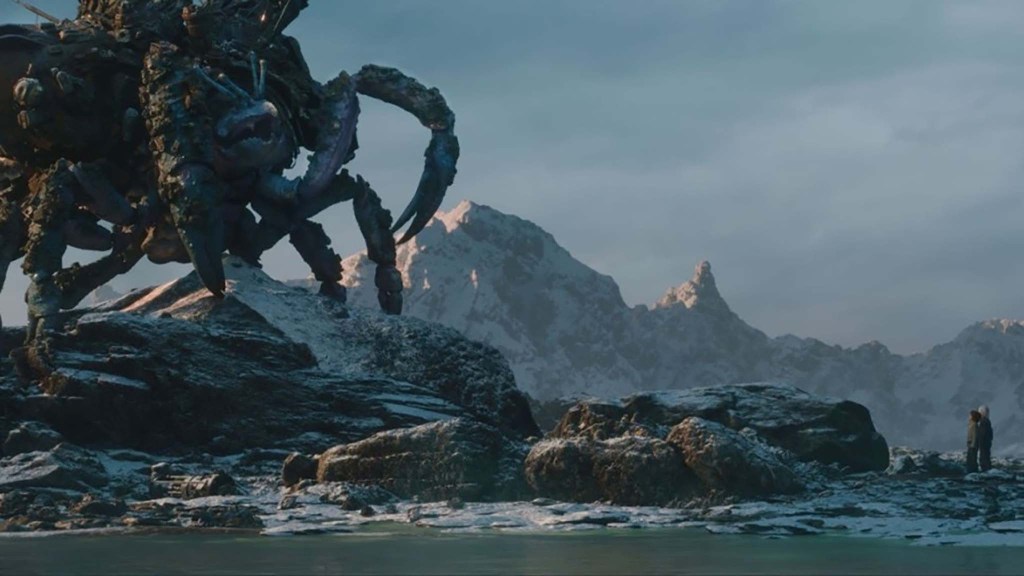In an era dominated by digital effects, Star Wars: Skeleton Crew‘s terrifying Mama Crab emerged from a distinctly old-school approach. The massive creature, which towers 30 feet tall compared to the show’s young protagonists, was brought to life through stop-motion animation at Tippett Studio, continuing the practical effects legacy of the original Star Wars trilogy. The project holds special significance as it was created under the guidance of Phil Tippett, the legendary animator behind The Empire Strikes Back‘s AT-ATs and tauntauns, marking a full-circle moment for the franchise’s practical effects tradition.
Videos by ComicBook.com
According to StarWars.com, the creature, nicknamed “Tet’niss” by its creators, became the heaviest stop-motion puppet ever produced by the studio. Visual effects supervisor Chris “CMo” Morley and art director Mark Dubeau collaborated with production designer Doug Chiang to craft a creature that balanced menace with accessibility.

“The original concept didn’t have much of a face,” Morley explains. “It was essentially a giant meatball with legs on it and a bunch of stuff sticking out of the back.” The team refined the design to include a snapping beak while maintaining what Dubeau describes as “a little bit of a Muppet quality,” ensuring the creature wouldn’t terrify younger viewers.
[RELATED – Star Wars’ Coolest New Alien Is Voiced by an Arrested Development Favorite]
The final puppet weighs approximately 15 pounds and features roughly 70 joints for animation. To support this unprecedented weight, the team developed a special harness system, one that required a little extra support.
“It’s definitely the heaviest stop motion puppet we’ve ever worked on,” Morley notes. “So heavy, in fact, that we had to build suspenders for it.”
Eagle-eyed fans might spot several Easter eggs hidden within the creature’s trash-covered shell. Dubeau reveals that miniature versions of familiar droids like R2-D2, K-2SO, and C-3PO are concealed among the debris, alongside fragments of the Millennium Falcon and Imperial walkers. However, Chiang insisted these references remain subtle, ensuring they didn’t distract from the overall design.
The creature also shares DNA with the original trilogy’s practical effects. Its gleaming eyestalks feature ball bearings treated with Sharpie marker, the same technique Tippett used for the rancor’s eyes in Return of the Jedi. The team even added digital slime effects to the creature’s mouth during roars to enhance its organic feel.
“It’s a dance because the intention of the animator can get lost in the reality of the puppet. The puppet will only want to do certain things, and as the animator, you have to lean into that,” stop-motion animation supervisor Tom “Gibby” Gibbons said.
The creation now stands proudly displayed at Tippett Studio, complete with a scientific name plate reading “Megapagurus detritiphorus” – essentially Latin for “big hermit crab carrying trash,” serving as both a tribute to practical effects craftsmanship and a continuation of Star Wars’ legendary practical effects tradition.
Skeleton Crew is now streaming on Disney+.









